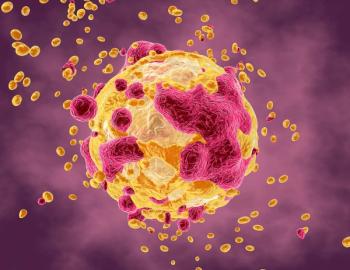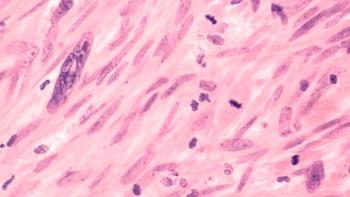
Poor Prognosis, Chemotherapy Underused for Angiosarcoma in Asian Patients
Angiosarcoma has generally poor survival among Asian patients; though chemotherapy can be effective, it has been underused in the last few decades.
Angiosarcoma has generally poor progression-free survival (PFS) and overall survival (OS) among Asian patients; though chemotherapy can be effective, it has been underused in the last few decades, according to two new studies presented at the European Society for Medical Oncology (ESMO) Asia 2016 Congress in Singapore.
Angiosarcoma is relatively rare, and very little data on outcomes and treatment were previously available. In
In patients with localized cutaneous disease, primary treatment included surgery for 55% of patients, chemotherapy for 21%, and radiotherapy for 17%. In those with visceral angiosarcoma, those rates were 73%, 11%, and 8%, respectively.
Among the 173 patients with locally advanced or metastatic disease, 27% received one line of chemotherapy, while 14% and 6%, respectively, received two and three lines.
The median relapse-free survival was 12.3 months in the full cohort, with no statistical difference between cutaneous (12.9 months) and visceral (9.5 months) disease. The median OS was 23.7 months in the full cohort, again with no difference between cutaneous (24.0 months) and visceral (23.0 months) disease (hazard ratio [HR], 1.22; P = .3).
The use of chemotherapy did offer benefit, though. In patients with locally advanced/metastatic disease, the median OS on best supportive care was 1.7 months, compared with 17.1 months for those who received at least one line of chemotherapy (HR, 5.30; P < .001).
“Only half of our patients actually received chemotherapy, hence it would be important to understand the reasons behind this low treatment rate,” Quek said in a
In the
In this study, the use of chemotherapy increased over the last 20 years; paclitaxel and doxorubicin were used more than other options. PFS in patients who received at least one line of chemotherapy was 3.8 months, with an OS of 8.3 months in the overall cohort. Patients who received some palliative chemotherapy had an OS of 11.5 months, compared with 4.4 months in those who did not.
“The two studies on angiosarcoma show that immediate PFS and OS are low, which reflects the aggressiveness of this disease,” said Thomas Brodowicz, MD, of Medical University Vienna in Austria, who commented on the studies. “It would be useful to have a more detailed breakdown of the patients-for example, the treatment and outcomes of primary angiosarcoma vs secondary, which forms at the site of radiation treatment for a previous cancer.” He also noted that data on paclitaxel’s efficacy when administered every 3 weeks or weekly would be useful to further guide future angiosarcoma treatment.
Newsletter
Stay up to date on recent advances in the multidisciplinary approach to cancer.



















































































